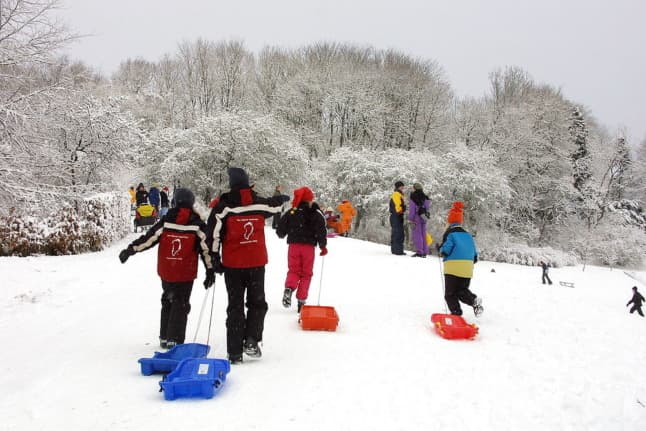Denmark’s weather forecasters hint at 'local' white Christmas

Small margins could decide whether Denmark gets a white Christmas in 2021 – or a grey or wet one.
National meteorological agency DMI says that prognoses for Christmas Eve weather are “ambiguous” and that small margins could decide whether the country awakes to a white layer of fresh snow on December 24th, the day on which most Danes traditionally celebrate the Christmas holiday.
But there is good reason for snow lovers to hold out hope for Christmas weather in keeping with the iconic imagery of the season, meteorologist Jens Lindskjold said via the agency’s website.
“The latest prognoses suggest that there will be snow or sleet in almost all of the country. That will begin as soon as the 23rd with snow, sleet and rain in large parts of the country, but margins will determine whether the snow will melt in a couple of degrees above zero around Christmas,” Lindskjold said.
Uncertainty around the forecast is related to whether a cold front moves north or south around the Christmas period, according to the meteorologist.
🎄Der er kun fire dage til juleaften, og det er marginaler, der afgør, om julevejret bliver vådt eller hvidt. Det gælder i Danmark🇩🇰 og overraskende nok også for dele af Grønland🇬🇱https://t.co/7hanaSdZk4
📸: Per Taudal, Nibe og Toke Brødsgaard, Nuuk pic.twitter.com/GESKnPz8tk
— DMI (@dmidk) December 20, 2021
“In short – the forecast in uncertain and right now there’s just a hair’s breadth between wet and white,” he said.
A weather front passing over Denmark on the 23rd and 24th is likely to bring snow to central and southern parts of the country, while snowfall coming in from the north also increases the chance of a white Christmas in northern and eastern Jutland on Christmas Eve, according to DMI.
This means that “local” white Christmases are possible while a “national” white Christmas, in which over 90 percent of the country is under a snowy blanket, is less likely.
The latter is a relatively rare occurrence and has only happened on nine occasions since 1900, DMI’s climatologist Mikael Scharling said on the agency’s website.
That happened most recently in 2009 and 2010, with the previous occasion before that as long ago as 1995.
Comments
See Also
National meteorological agency DMI says that prognoses for Christmas Eve weather are “ambiguous” and that small margins could decide whether the country awakes to a white layer of fresh snow on December 24th, the day on which most Danes traditionally celebrate the Christmas holiday.
But there is good reason for snow lovers to hold out hope for Christmas weather in keeping with the iconic imagery of the season, meteorologist Jens Lindskjold said via the agency’s website.
“The latest prognoses suggest that there will be snow or sleet in almost all of the country. That will begin as soon as the 23rd with snow, sleet and rain in large parts of the country, but margins will determine whether the snow will melt in a couple of degrees above zero around Christmas,” Lindskjold said.
Uncertainty around the forecast is related to whether a cold front moves north or south around the Christmas period, according to the meteorologist.
🎄Der er kun fire dage til juleaften, og det er marginaler, der afgør, om julevejret bliver vådt eller hvidt. Det gælder i Danmark🇩🇰 og overraskende nok også for dele af Grønland🇬🇱https://t.co/7hanaSdZk4
— DMI (@dmidk) December 20, 2021
📸: Per Taudal, Nibe og Toke Brødsgaard, Nuuk pic.twitter.com/GESKnPz8tk
“In short – the forecast in uncertain and right now there’s just a hair’s breadth between wet and white,” he said.
A weather front passing over Denmark on the 23rd and 24th is likely to bring snow to central and southern parts of the country, while snowfall coming in from the north also increases the chance of a white Christmas in northern and eastern Jutland on Christmas Eve, according to DMI.
This means that “local” white Christmases are possible while a “national” white Christmas, in which over 90 percent of the country is under a snowy blanket, is less likely.
The latter is a relatively rare occurrence and has only happened on nine occasions since 1900, DMI’s climatologist Mikael Scharling said on the agency’s website.
That happened most recently in 2009 and 2010, with the previous occasion before that as long ago as 1995.
Join the conversation in our comments section below. Share your own views and experience and if you have a question or suggestion for our journalists then email us at [email protected].
Please keep comments civil, constructive and on topic – and make sure to read our terms of use before getting involved.
Please log in here to leave a comment.